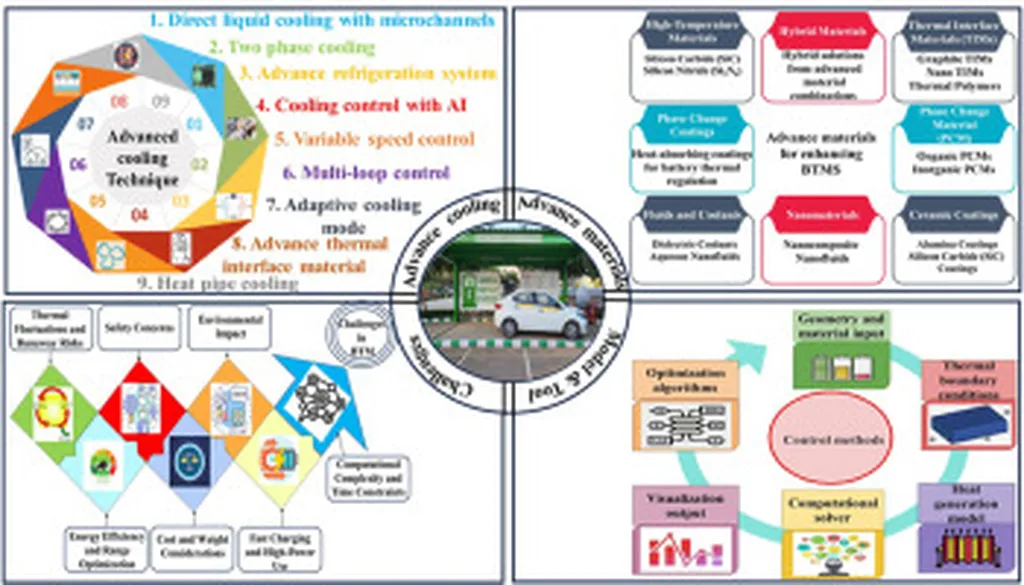In the rapidly evolving world of electric vehicles (EVs), one critical challenge stands out: how to efficiently manage the heat generated by high-capacity lithium-ion batteries, especially during fast charging. A recent study published in the journal “Achievements in Engineering,” led by Houssein Ammar from the Basic and Applied Sciences Research Center at Al Maaref University in Beirut, Lebanon, delves into this very issue. The research explores different thermal management strategies, offering promising insights that could significantly impact the EV industry.
As EVs become increasingly prevalent, the demand for effective battery thermal management systems (BTMS) has grown exponentially. Fast charging generates substantial heat, necessitating efficient thermal regulation to maintain optimal battery performance, safety, and longevity. Ammar and his team set out to evaluate three BTMS techniques: passive cooling with phase change materials (PCM), indirect liquid cooling, and hybrid systems, using an 8-cell, 105 Ah lithium-ion battery pack as their test subject.
The team developed a 3D numerical model using COMSOL Multiphysics to simulate the systems under various charging rates (1C, 2C, and 3C). They conducted extensive parametric analyses to optimize each cooling method. For liquid cooling, they examined different battery arrangements, tube lengths, tube configurations, flow regimes, and the use of an aluminum cold plate with water as a coolant. For the PCM system, they tested paraffin wax reinforced with graphite in various thicknesses.
The results were enlightening. The liquid cooling arrangement with three inlets and a wavy tube architecture achieved a peak temperature of 36.8°C and a temperature variation of 1.8°C at a 3C charging rate. Meanwhile, the PCM-based method reached a peak temperature of 42°C but demonstrated superior temperature uniformity, with a variation of just 1.4°C under the same conditions.
To capitalize on the strengths of both approaches, the researchers developed a hybrid cooling system. This innovative solution combined the low peak temperatures of liquid cooling with the uniformity of PCM, resulting in a maximum battery temperature of 36.7°C and a temperature variation of only 1.0°C at a 3C charging rate.
“This hybrid approach offers a balanced solution, providing excellent thermal regulation while maintaining a modest increase in weight and implementation cost,” Ammar explained. The cost-performance analysis underscored the hybrid system’s potential to enhance battery longevity and reliability significantly.
The implications of this research are far-reaching. As the energy sector continues to pivot towards electrification, effective thermal management solutions will be crucial for advancing EV technology. The hybrid BTMS developed by Ammar and his team could play a pivotal role in shaping the future of EV batteries, ensuring they operate safely and efficiently even under demanding conditions.
Moreover, the insights gained from this study could inspire further innovations in thermal management strategies, driving the energy sector towards more sustainable and reliable solutions. As the world continues to grapple with the challenges of climate change and energy transition, such advancements are not just beneficial but essential.
In the quest for better, more efficient, and safer EV batteries, this research marks a significant step forward. By addressing critical thermal issues during rapid charging, the hybrid BTMS offers a promising path towards extending the lifespan and dependability of high-capacity lithium-ion batteries, ultimately contributing to the broader adoption of electric vehicles and a cleaner, greener future.

